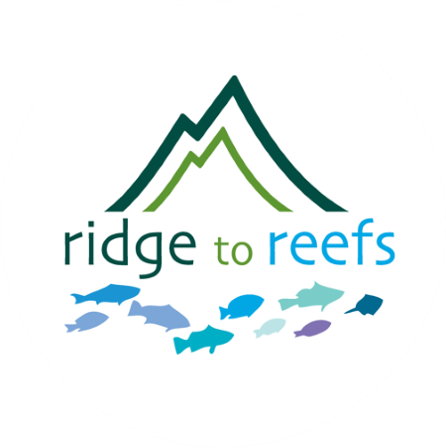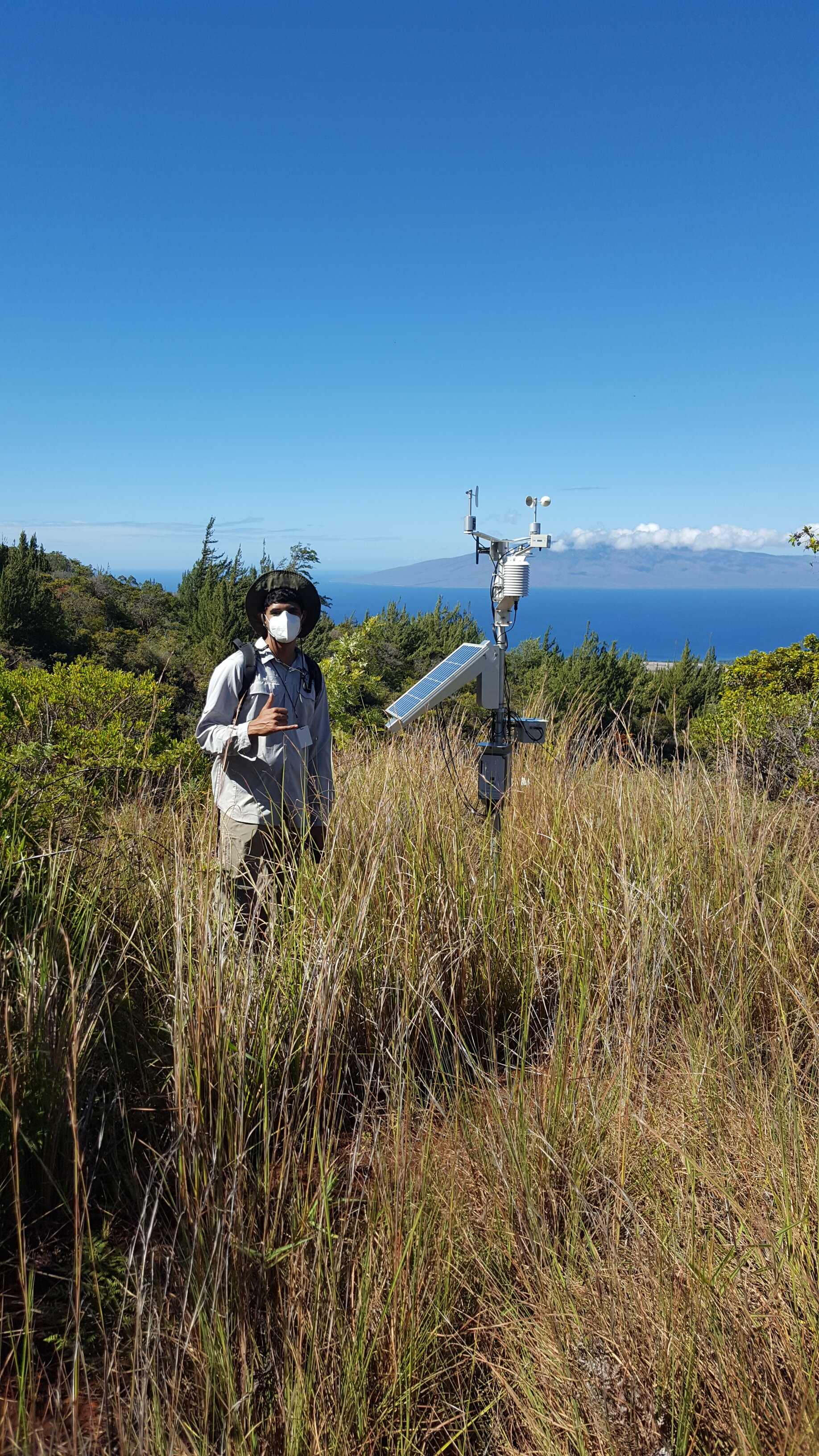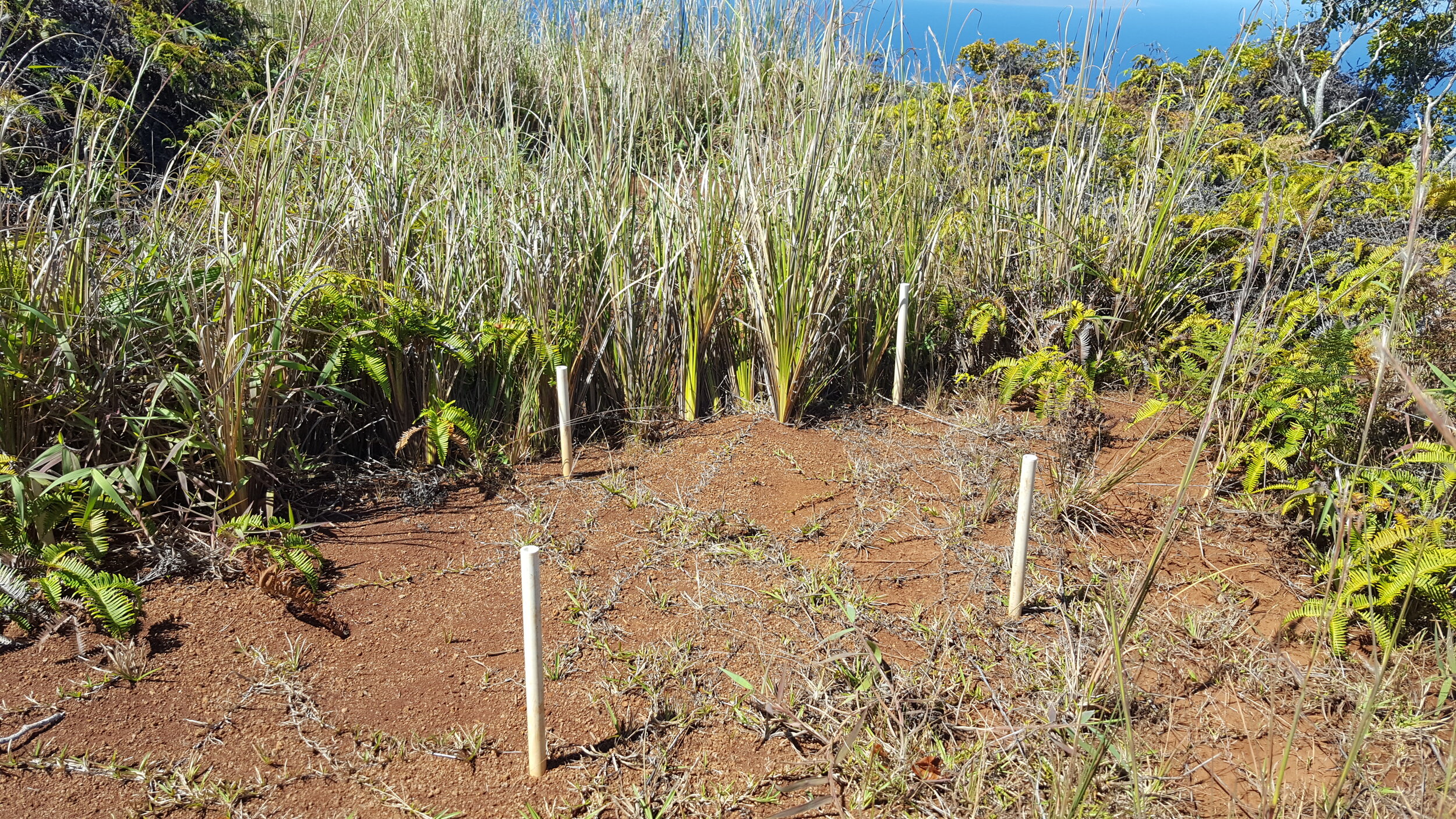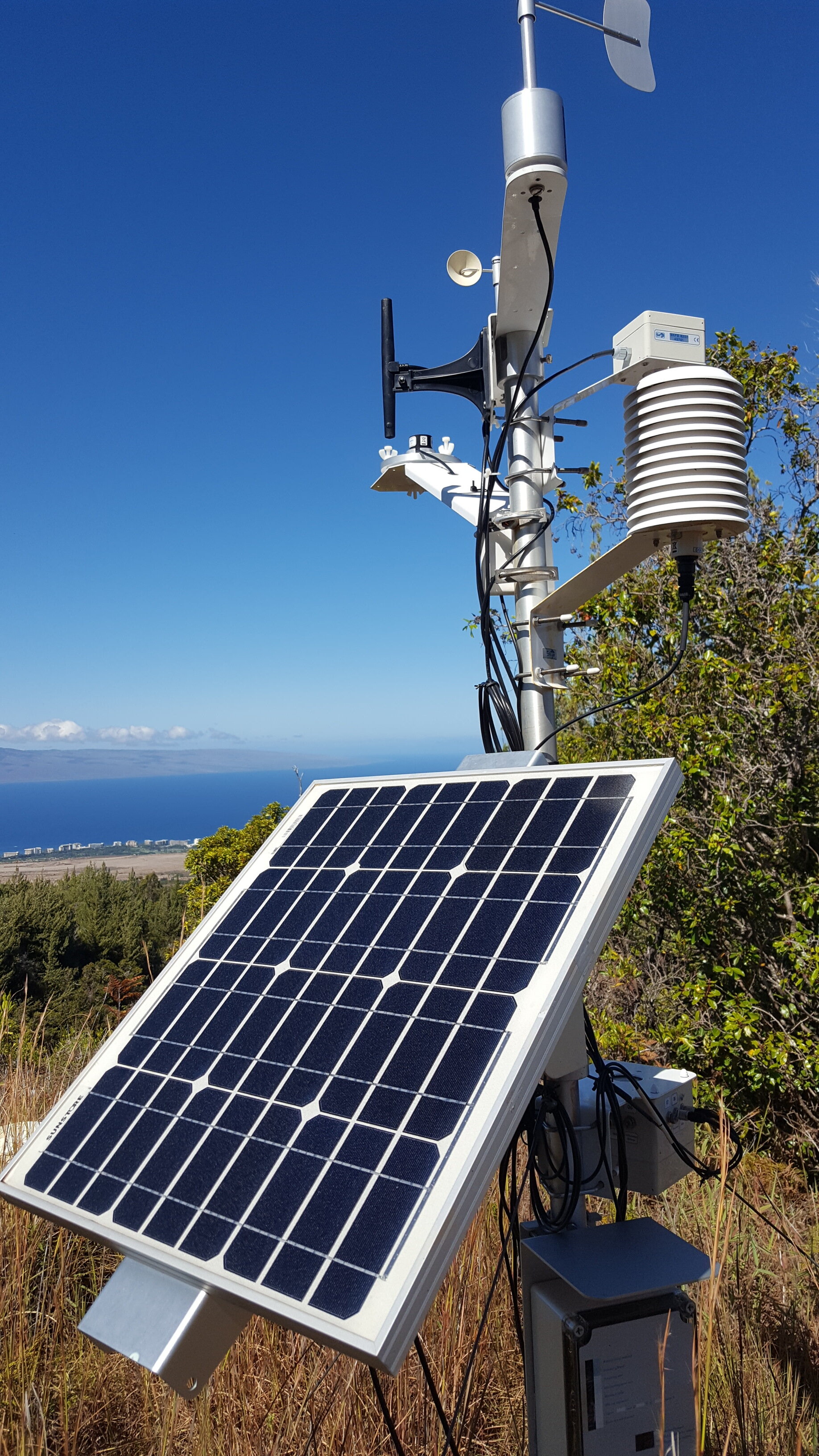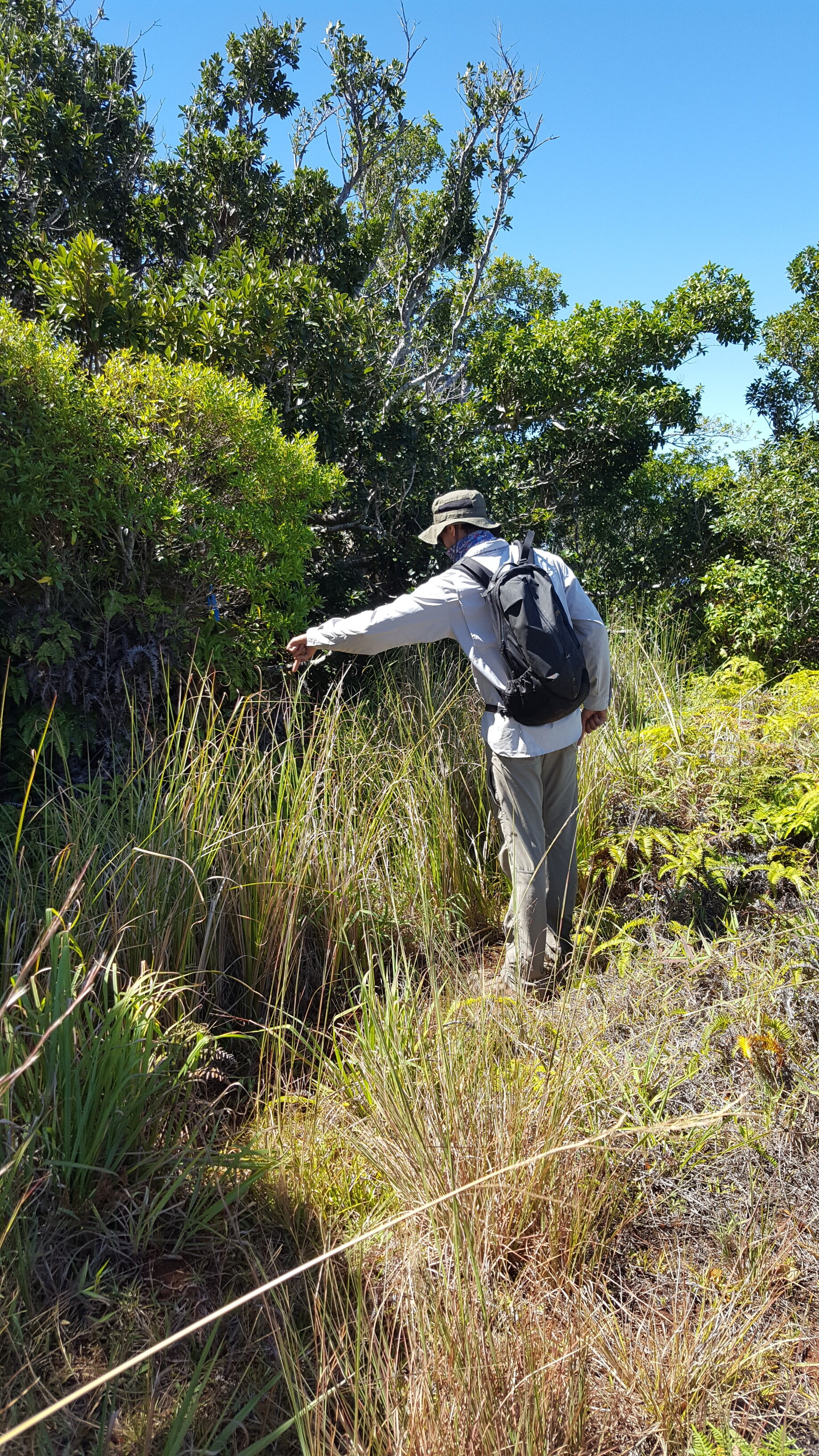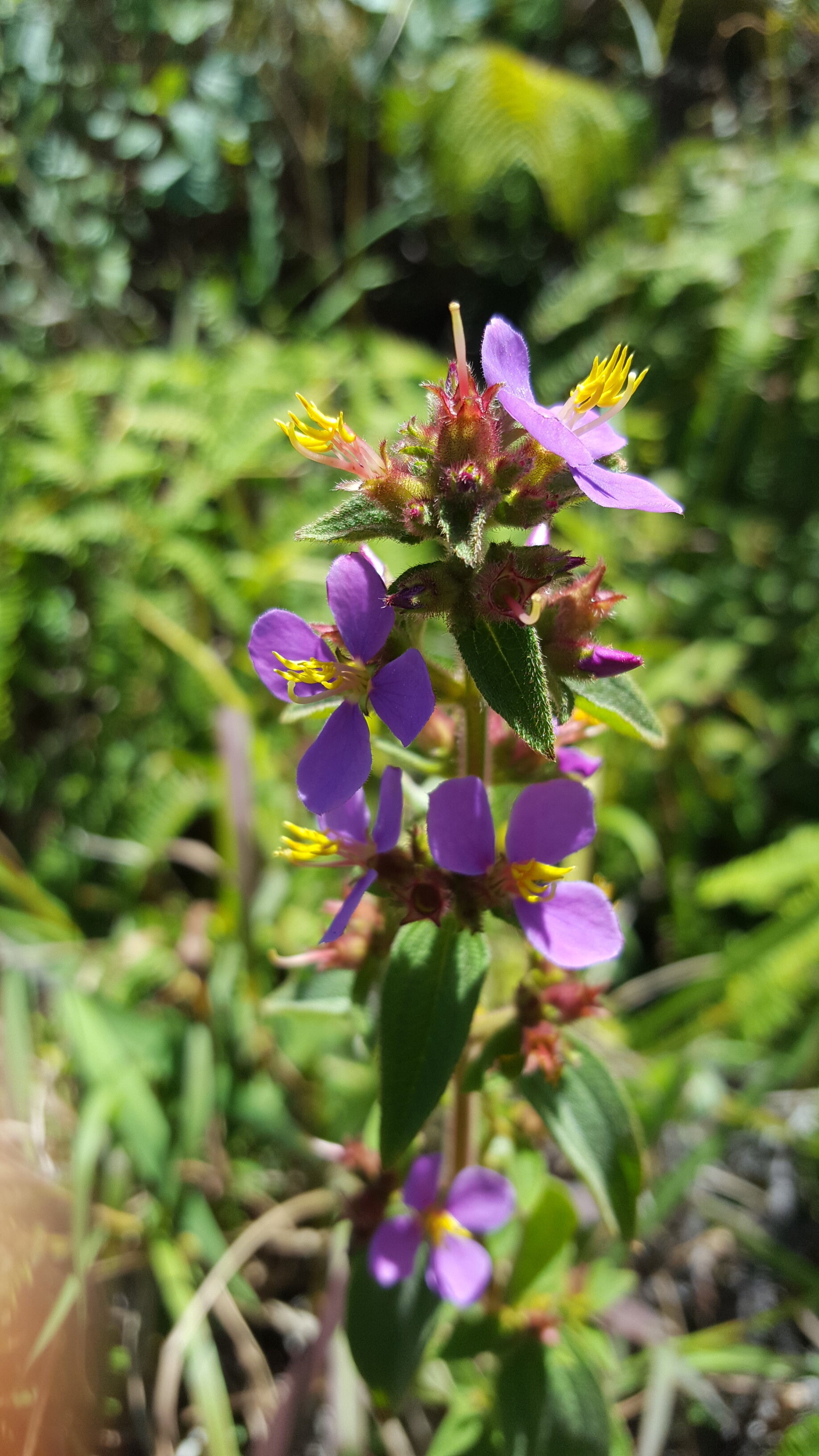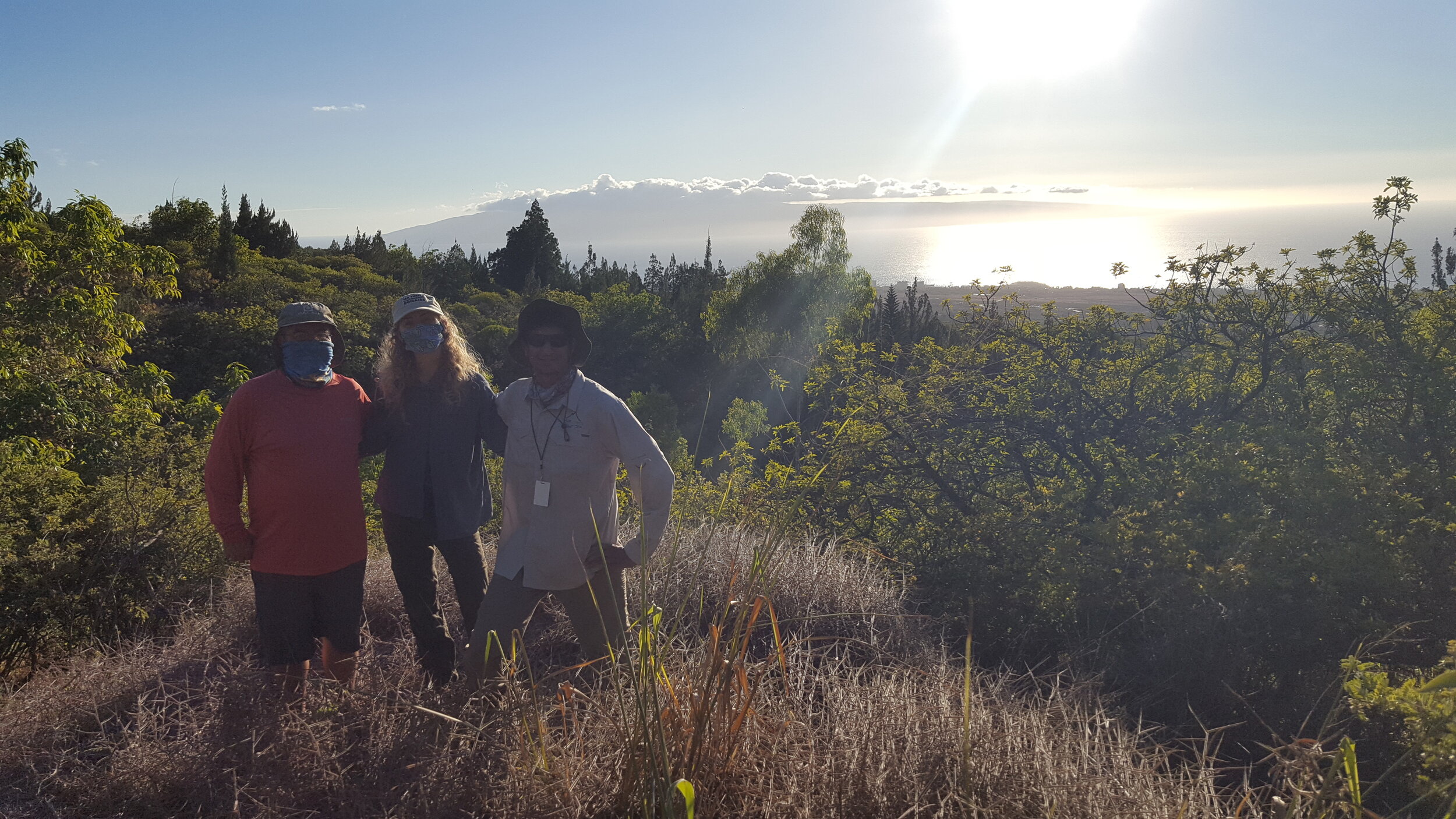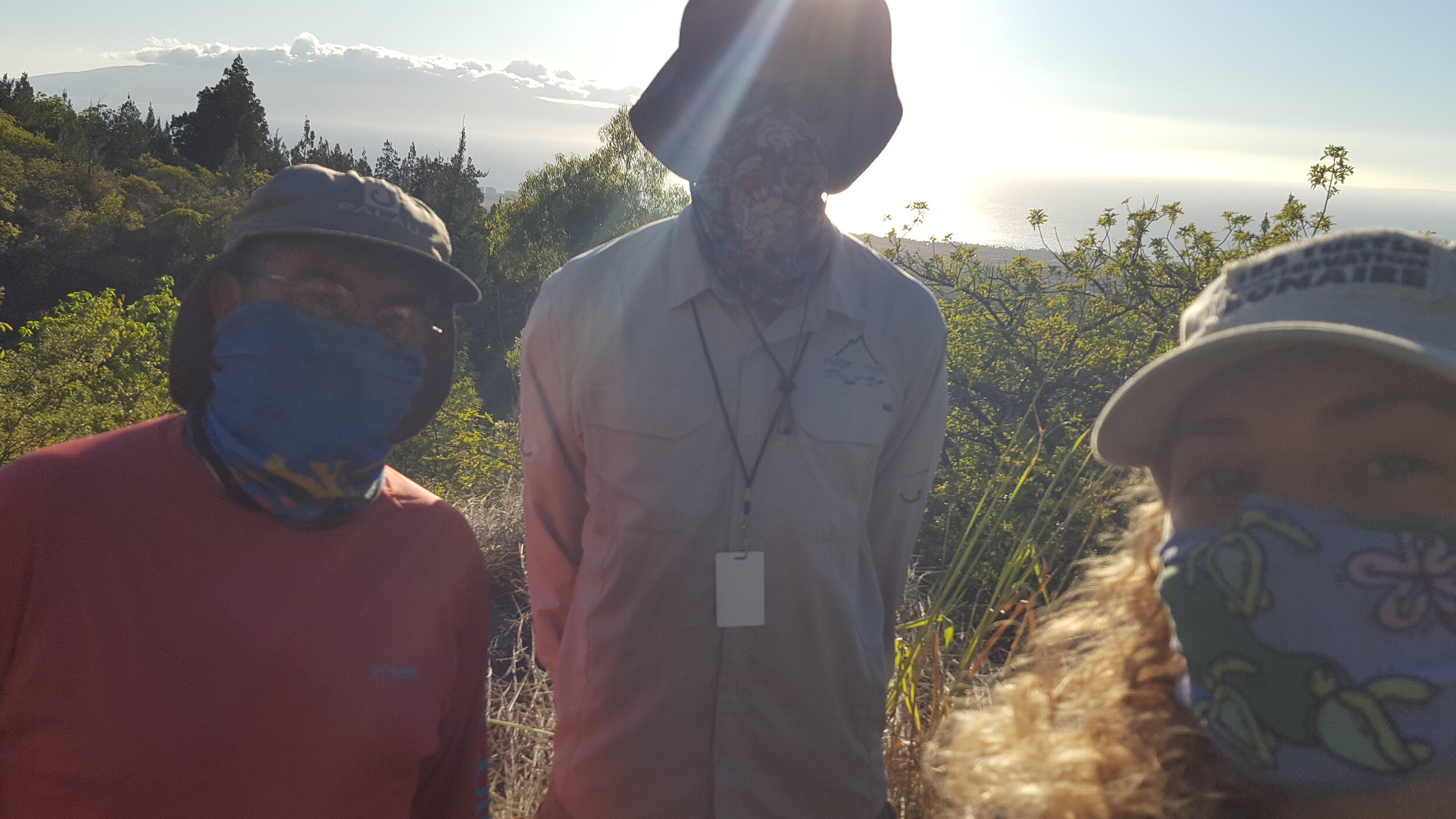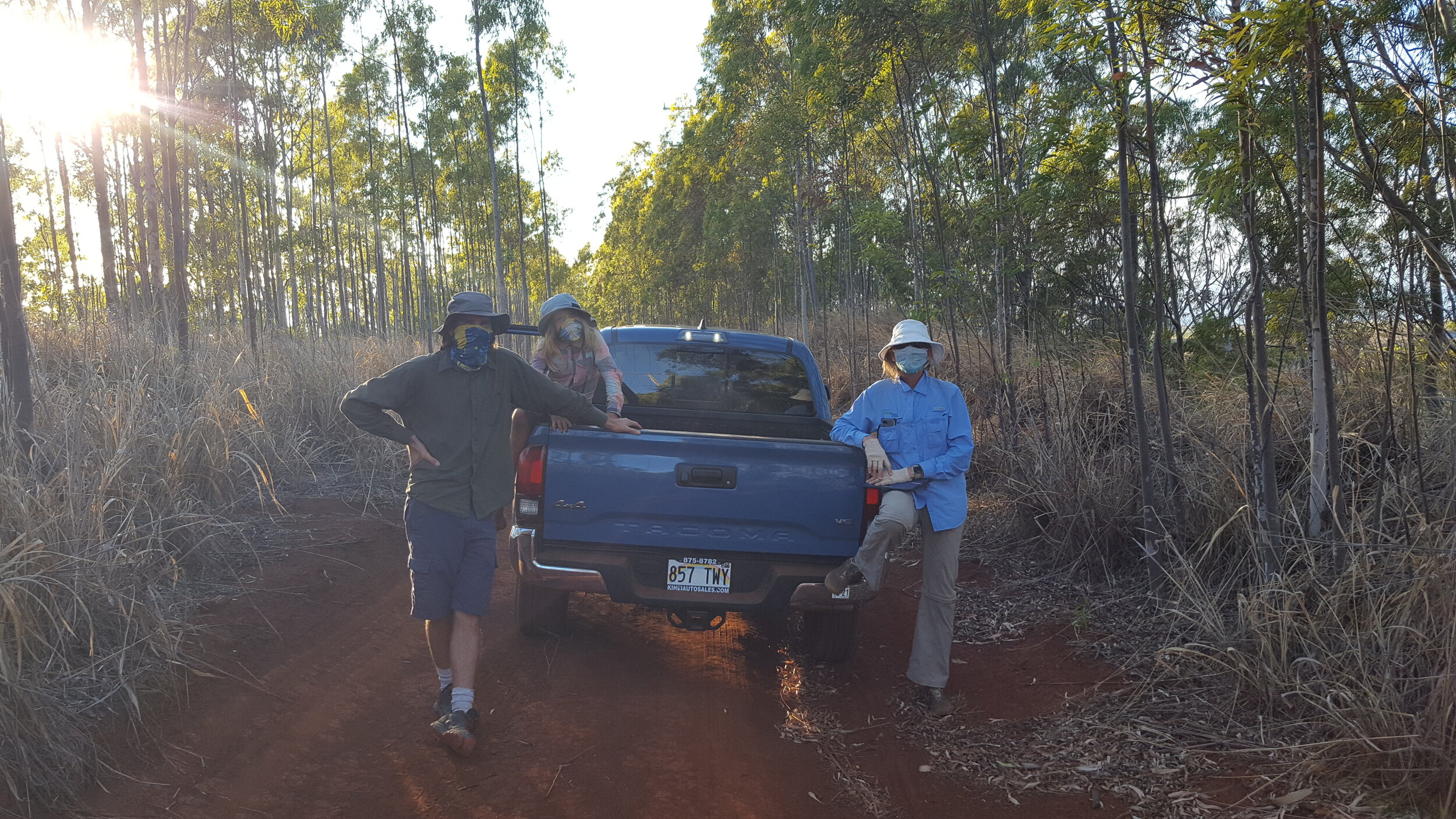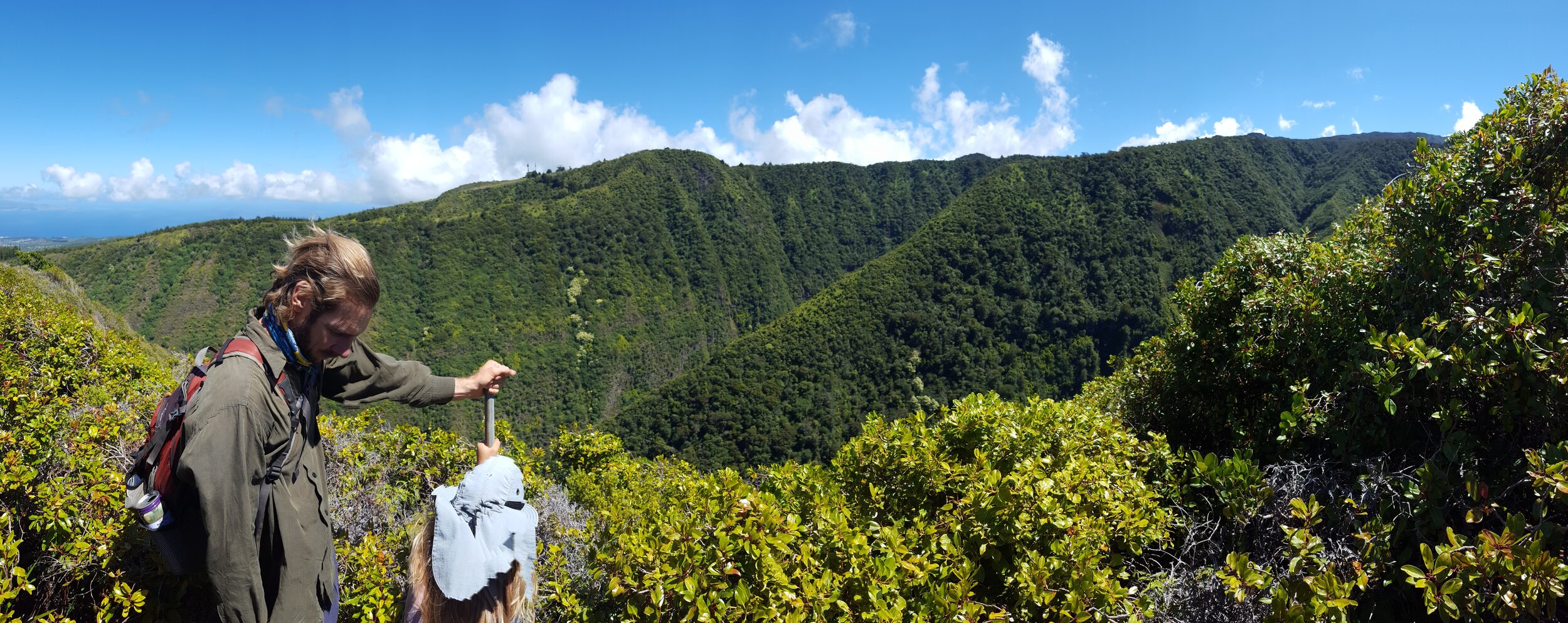Maui Diaries - Day 8: Best Job Ever
Oct 5th, 2020
It was a sleepy but enjoyable weekend quarantining in paradise. We most definitely did not go hiking, and two out of the three of us had solo dance parties. On Sunday, we made a task list for all of the Hawaii projects we are currently managing on this trip. Project management in the nonprofit sector, at least in a small organization such as Ridge to Reefs, is a unique challenge in itself. The nature of this work is funding dependent; in other words, we apply for grants, and if we get them, that project then gets added to the queue. At any one time we are moving multiple projects forward (currently we have around 8), all with different timelines, partners, goals, and team member roles, and often in different locations. Not to mention we all work remotely unless in the field, with our immediate team (all five of us!) spread from Michigan to Maryland to North Carolina. Needless to say it takes a special knack for communication, time management, and self-discipline to work in this dynamic environment; not to mention a love for variety, a need to be challenged, and the ability to adapt to changing needs in an instant.
Working in the environmental nonprofit sector has been an enlightening and rewarding experience. Everyone on the team, Executive Director included, is constantly researching and learning new ways to solve conservation problems. One of the things I love most about this job is that we will never stop learning. There is always an innovative technique to research, an expert to consult with; we are professional learners, able to identify the key people and resources who can help us answer our burning questions, such that we can engineer the best possible solution for a specific problem. And once implemented, we are taking scientific and qualitative data, checking our real-world results against our calculations and hypotheses, and adjusting our strategies as necessary. Now that’s good science.
Today, we worked diligently to finalize some design decisions for a nature-based alternative wastewater treatment system to be tested for certification in the state of Hawaii. To us, that’s exciting stuff, because there are over 90,000 failing septic systems in Hawaii that are leaching unsafe water to coral reefs and drinking water sources. Ecological engineering is pretty amazing – we can basically layer-cake some plants, soil, sand, gravel, and woodchips, throw in a few pipes, load the system with dirty water for at least 24 hours, and like magic: microbes provide adequate water treatment.
The wastewater system is just one of many ongoing projects, and somehow we are able to move forward consistently with each one, get our work done, and still have fun while we’re at it (and when we are not). We are a bit pressed for time to get everything we need finished in these short 3 weeks on-island, but that makes it all the more exciting. When we leave here, we will know that our projects are moving along smoothly, and we will have strengthened some important relationships with our partners, and with one another. Who knew work could be so rewarding?
Maui Diaries - Day 5: Regenerative Agriculture
Ridge to Reefs is a strong proponent of Regenerative Agriculture: a method of farming that “among other benefits, reverse climate change by rebuilding soil organic matter and restoring degraded soil biodiversity.” Unfortunately, conventional farming practices used by many of the main producers are ultimately damaging to the environment, stripping lands of their organic matter content, exacerbating erosion and requiring large quantities of fertilizer inputs due to the lack of nutrient content in the now depleted soil. Larger farms with high demand often resort to poor practices such as tilling or using pesticides, which in the short term may result in higher yields, but in the long term destroy the land’s ability to produce nutrient-rich food, while also contributing to water pollution and human health issues. There is a better way, and it incorporates traditional, pesticide-free techniques with low-impact technology to produce high-quality food without compromising soil and human health.
Organic farming and supporting small to medium-sized local farms is becoming more popular as people become more familiar with the environmental and health consequences of conventional farming. Regenerative Farming takes this a step further, by incorporating techniques such as mycorrhizal (fungi) inoculation, no-till farming, and cover cropping to rebuild healthy soil. When high in organic matter, soil will hold on to carbon, rather than release it; resulting in a net positive impact on climate change.
An experimental taro patch using no added fertilizers and mulch as natural weed suppression.
At the La Kahea Community Education Farm in Waikapu, Maui, Regenerative Agriculture is the top priority. Winsome, Jakke and Whitney are pioneering best practices for taro production and other crops, while hosting educational workshops for the local community to learn skills like natural building (e.g. earthship construction and clay structures) and organic farming. They have found a way to get mulch practically for free, and spread it on their plots thick, eliminating the need for plastic weed suppression, and increasing the water holding capacity of their soil. As a result, they use half the amount of water and build soil far faster than conventional methods. They also brew compost tea and incorporate biochar into their planting. In addition, La Kahea is diversifying their revenue stream to include workshops, value-added products (Maui Chews, a delicious sugar-free chewy banana chip), natural fertilizers, and more. They learned from COVID-19 that having multiple products and services is important to maintain resilience against the many unknowns inherent in farming.
Their farmland is shared with several other farmers and is situated within a scenic landscape; mountains climb high behind and before us, and dust devils whip up as the winds race down through the valley across the landscape. You can see for miles in every direction, the ocean visible and shining under the noonday sun. We met in their earthship outdoor kitchen area, and took a tour of their land, seeing a deep litter piggery in action and meeting another farmer, Bobby, who stopped using plastic on his land after decades of using plastic mulching, simply because he was inspired by the La Kahea team’s model. To quote Jakke, you should “never tell another farmer how to farm.” La Kahea truly leads by example, rather than prescribing solutions, and their work is moving the island one step closer to a more regenerative model.
Discussing project goals in La Kahea’s outdoor earthship kitchen, built with help from the local community.
Ridge to Reefs will be partnering with La Kahea on an NRCS Conservation Collaboration grant to produce a Long-Range Plan to support conservation practices on small- and medium-sized farms of Maui. We are looking forward to learning more about the unique challenges farmers on Maui face through a Needs Assessment and farmer surveys. Through this research, we will strategize a path forward that ensures all farmers are receiving the support they need to protect their soil health and downstream waters while thriving economically.
Maui Diaries - Day 4: Talk Story
Oct 1st, 2020
Talk story (noun): to talk with old friends; pass time by chit-chatting; gossip; share wisdom and stories
Today we had perhaps the most Hawaiian meeting ever, with our on-island contractor. We were heading to our cars after having been out in the rain, when he rolled up in his truck and handed Paul and Phal what they later discovered was a Pepsi float from McDonald’s. Spontaneously, he invites us to follow him to his house where we could “talk story” and plan for some invasive tree and sediment removal at our vetiver grass kickouts in Honokowai.
We wind through the seaside cliff highway in the rain, eventually following our partner down what seemed to be a several mile dirt road heading even deeper into the mountains. We passed many houses through what looked like a tropical forest, and identified some plots of taro (a staple starch in the Pacific Islands). Finally, after crossing a small river in our periwinkle Toyota Tacoma, we end up at our contractor’s house, and are greeted by his mother preparing food for us. “Sit down, sit down”, everyone insists, so we do, wet clothing and all (socially distanced of course).
We “talked story” for quite a while over amazing food, such as lightly fried banana crepes, steamed ulu (breadfruit) and creamy guacamole crafted by the elder of the house, whom we referred to as “aunty” out of respect for the local culture (elder men would be called “uncle”). The contractor was a native Hawaiian from Kauai, and he shared a plethora of stories that made it clear how different it was to grow up out here than on the East coast of the U.S. - like the fact that as a kid, he went to school Monday and Tuesday, then ventured out into the mountains from Wednesday to Sunday, to return with pounds of hunted meat for his family every weekend. He mentioned some sketchy encounters with military submarines and emphasized the familial values of his home island. He and his wife emphatically spoke back-and-forth about their adventures, laughing the whole way through. It was captivating to witness their aliveness and to learn about their culture. I sat back and let Phal do most of the talking; it was enough simply to watch, be grateful for their hospitality, and soak in the newness of this special cultural moment doubling as a business meeting.
In the islands where we work, it is vital to develop personal relationships with our partners. In fact, without having a good rapport with the locals, you would be hard pressed to get anything accomplished (unless you’re a developer with tons of money, but that’s a different story). Family and connection is extremely important to Pacific Islanders. We are fortunate because Phal lived and farmed in Hawaii for several years, and both he and Paul are extremely sociable people who wear their passion on their sleeves. Our team is poised to have no problems developing lasting professional relationships and friendships with top-notch people who have the connections, know-how and drive to get quality work done.
Maui Diaries - Day 3: Wasting Water
Sep 30th, 2020
Wastewater management on islands is a unique challenge. Often there is not much distance between wastewater treatment plants or residential cesspools/septic systems and the ocean. Failing wastewater treatment systems are problematic in general; in the case of islands, any untreated water that bypasses the system can easily leach into the groundwater and out to the ocean. This wastewater has been directly linked to coral reef degradation in Hawaii and other places around the world. Over time, Ridge to Reefs has eased into wastewater management on islands. This year especially we have been engineering nature-based solutions to manage this waste in a cost-effective and low-tech way.
Maui County in particular is facing a major issue that our team and partners are working to potentially provide a solution for. Ironically, while water is a limited resource for the island and local farmers, the Reclamation plant has an excess of R-1 wastewater that they have not been able to reuse (e.g. sell to farmers or land owners for irrigation). Until recently, their solution to this issue of excess was to inject this water into the ground. To be clear, R-1 wastewater is treated to a certain extent; in other words, Maui County was not simply injecting raw sewage into the groundwater. This classification of wastewater is not potable nor suitable for edible crop irrigation, but can be used on landscapes safely. However, environmental groups fought against the County’s injection practice. This year, the Supreme Court cracked down on Maui County, so they can no longer inject wastewater without facing severe consequences. Despite their increased diligence in treating this R-1 wastewater to higher environmental standards, they are still seeking a solution to dispose of or reuse this wastewater in a safe and publicly acceptable way.
In partnership with farmer John Astila of Sunshine Vetiver Solutions, who grows and sells vetiver grass among other crops on the island, Ridge to Reefs is piloting a system to dispose of this wastewater through evapotranspiration (water loss by soil and leaves) and inefficient sprinkler irrigation. This system would use up water quickly, since vetiver grass is specialized for fast water uptake, and the climate is so dry much of the sprinkler water would evaporate almost instantly. The pilot will demonstrate how much water vetiver can actually uptake and sprinklers can waste, so that we can calculate how many acres would be needed to achieve 100% disposal. By doing this, we can provide the County with a cost-effective, environmentally-friendly solution.
Brainstorming on John’s leased land adjacent to the Maui County Wastewater Reclamation plant, which will be the location of the pilot project.
It is indeed strange to be designing a system that disposes of water which is so needed by farmers across the island. As of now, this vetiver/sprinkler system would serve the County’s purpose: to dispose of the wastewater in a cost-effective way that is acceptable by the public. Ideally, we also would like to incorporate native species into the mix, or be mindful about placing these sites on priority areas with high erosion; and we may even test out a bioreactor while we’re at it, to further treat the water so that the County can reuse or inject it safely. We spent a long time discussing the options today, and we are moving forward with designs and further conversations to nail down our pilot project.
Through this project, we hope to produce some convincing data that something as simple as deep-rooting, tall grass and sprinklers can solve a wastewater management issue. We are excited to tackle this unique problem through creativity, science, and collaboration.
________________
P.S. There is a wild brush fire about 2.5 miles up the mountain from us. Sure would be a nice way to put some of that excess water to use...
Smoke from the wildfire seen from our car.
Maui Diaries - Day 2: Field Day
Sep 29th, 2020
Today was a typical Ridge to Reefs 9AM-6PM field day. We met with a few of our partners, Tova Callender, the Watershed Coordinator with West Maui Ridge 2 Reef, and Wesley Crile, Coastal Dune Restoration Specialist with University of Hawaii Sea Grant Program (and his energetic son, Heron) to check out some “kickouts” along a steep dirt road in the Ka’anapali Coffee Plantation and Kapunakea Nature Preserve. These kickouts are designed to slough water from the road down the gulch to avoid extreme erosion from rainfall events. A few years back, we planted vetiver grass rows in these kickouts to capture excess sediment that otherwise was washing off the mountain, down into streams and out to the nearby coast. Sediment overload can suffocate coral reefs and cause unusual levels of turbidity in these vital ecosystems. Capturing the sediment upstream with fast-growing, deep-rooted grasses such as vetiver is a cost-effective and natural solution to keep the reefs safe.
It has been uncharacteristically dry in Maui for this time of year. Consequently, the air was clear, making the view from our project site even more stunning than usual. As we climbed up the steep mountain road to scope out the twenty-something vetiver kickouts, we could see the waves breaking and the mountain contours on the adjacent islands of Moloka’i and Lana’i. Along the way, we brainstormed pilot projects for managing invasive/introduced species such as eucalyptus and strawberry guava (which is delicious, by the way); and took GPS coordinates and notes for each of the kickouts.
It was a long, fulfilling day of hiking, scheming, planning, and talking conservation goals, and we accomplished a great deal through our intentional walk out in nature. And I must say that it was especially refreshing to be accompanied by a nine year old the whole way; his adventurous spirit and amazing knack for identifying plants really added something special to our work day. His tree climbing and rolling-in the-dirt were inspiring, and he even had some genius suggestions when it came to experimental design. Playing out in nature never gets old, and it’s perhaps made even better when you work for an organization that gets funded to protect the beautiful land- and seascapes we all cherish so much.
COVID-19 Maui Diaries - Day 1: Crisis Averted
Sep 28th, 2020
8:19PM Hawaii Time (2:19AM EST)
Under normal circumstances, having a trip to Hawai’i on the books would excite any reasonable person. However, this is 2020; “Normal” is obviously not part of the scheduled programming. As an organization that develops and implements projects on islands such as Hawai’i and even the more remote Palau and American Samoa, yet whose employees live on the East coast of the United States, logistics can be a bit tricky. While we can plan and communicate with our partners from afar, it is important that our team is on the ground surveying the land and getting our hands dirty. So, despite the many obstacles keeping us from traveling, we committed to a 2020 trip to Maui.
The months and weeks prior to the trip were stressful, because the island rules and restrictions were constantly evolving, clear answers hard to pin down. The Hawaiian islands were closed to visitors until late September, since the coronavirus pandemic officially struck. Finally, they started easing their travel ban, very carefully – and for good reason. Maui has relatively low cases while contagion in Oahu is surging, so even inter-island travel is sketchy. Our departure date kept getting pushed back, week after week, until finally we felt confident enough to buy tickets. Finally, we booked our flight: September 28th. It was official. Now we just needed the State, or at least Maui County, to approve us as Essential Workers so that we could accomplish the work we were traveling there for. We applied, we emailed, we filled out all of the forms; and our efforts paid off.
The State still requires a strict 2-week quarantine for all incoming passengers (they will track you and they have arrested people); but due to our work with agriculture wastewater, we were deemed Essential Workers with Limited Quarantine Exemption status – meaning that we could travel to and from our rental home and place(s) of business, and that’s it. Food and goods would have to be delivered to us; even a store visit is forbidden. Despite the restrictions, we are grateful for the ability to finally get on the island, start some new pilot projects, check on existing ones, and reinstate our commitment to the mission of reducing pollution to the precious Hawaiian reefs.
After 10+ hours of air travel, and several more spent in airports, we finally arrived at Kahului airport in Maui. It was empty until the passengers of our plane departed the aircraft, and we were then queued down a well-watched lane to speak with airport employees who donned both masks and plastic face shields. We were almost out of the airport, on our merry way to our Quarantine in Paradise; until Paul received a very poorly timed voicemail from our AirBNB host, saying that they were no longer comfortable with us staying there, on account of there being a $5,000 fine for COVID-19 violations by rental home owners. Obviously, they were fearful and uncertain of the consequences, generally untrusting of visitors (can you blame them?), and unfortunately, waited until the last minute to tell us. You know, just after we landed in Hawaii.
We instantly became alert to the potential consequences of this situation: all of our State-approved paperwork done up to this point may be in jeopardy, risking our legitimacy as Essential Workers, and potentially endangering ourselves or others by needing to change accommodations last minute to a more crowded hotel rather than an isolated cottage. Uh-oh.
I am happy to report that after some back-and-forth with the host, we convinced him to still let us stay at his cottage – and assured him that we had no intention of breaking quarantine and getting him fined. So we are settling into our humble abode, which we will become more than familiar with as the 2-week limited quarantine rolls on. Fortunately, we have several projects on the island to attend to; and when we are stuck at home, we have a guitar, three go pros (don’t ask), a jump rope, a yoga mat, and three extremely passionate, creative people. I’m confident we can entertain ourselves. Who knows; maybe we’ll solve world hunger while we’re at, too.
RTR Travels to Maui - COVID-19 Edition
As of today, three members of the Ridge to Reefs team have traveled to Maui for a 3+ week work trip to complete and begin several projects on the island. We are committed to providing you all with a daily play-by-play of this trip, which is made all the more interesting by the fact that COVID-19 has changed everything.
Welcome to the Ridge to Reefs Maui Diaries - COVID-19 Edition.
Stay tuned!
~~~~~~~~~~
Posts:
Day 1 - Crisis Averted
